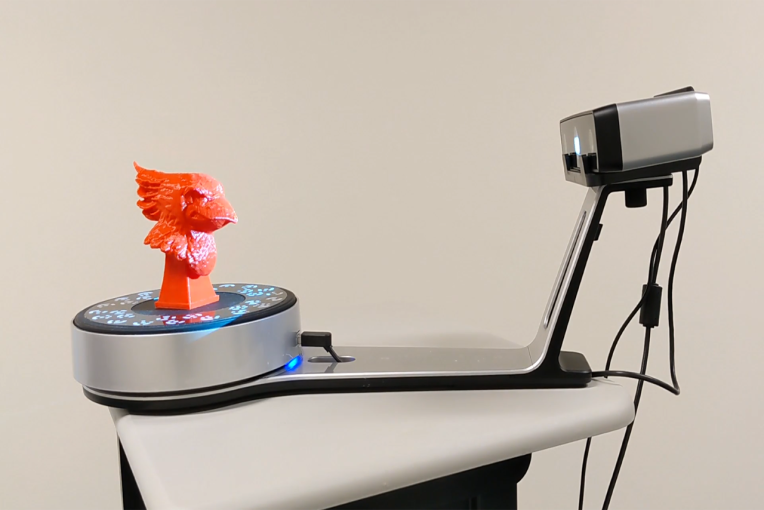As the capabilities of digital technologies evolves, so too must the teaching materials available at Illinois State University to prepare students for the subsequent changes brought about to industries across the globe.
We see this evolution here at Illinois State’s own Milner Library where the recent introduction of a 3D scanner has enabled students and faculty to stand at the forefront of innovation. The scanner, a Shining Einscan-SP, is capable of imaging objects of a wide variety of sizes and shapes. Although it can scan objects up to 609 mm3, it will produce its best results from objects sized between 30 mm3 and 200 mm3. It uses a turntable to scan multiple images of the object from all angles with light phase shift technology. This form of scanning captures images with an accuracy of 0.05 mm, making it so even the most minute features are rendered with great precision.

A previous request from the School of Biology for a replica of a taxidermized bird was the precursor to Milner’s acquisition of this scanner. “We didn’t have a scanner at the time, or else we could’ve scanned their existing model, but we were lucky enough to find a pre-existing model,” recounts Paul Unsbee, director of IT services at Milner Library. “But that started our real, serious look into what was available to us.” Not long after, the department was able to implement the scanner as an addition to its ever-evolving assortment of technology services.
As of now, access to the scanner is limited to faculty and graduate students for education- or research-related uses. Though Milner hopes to soon open access to the scanner to the rest of the student body, this limitation allows faculty to gradually become acquainted with the new technology. Interested individuals must fill out a 3D scan request form and then drop off their object to library IT services.
This new addition opens many doors to new and exciting academic opportunities, such as digitization of artifacts held in the Dr. Jo Ann Rayfield Archives, replication of objects for use in game design or creative technologies projects, and even reproduction of anatomical models for studies in medical laboratory science.
“Honestly, I highly suspect that I’m thinking too narrowly as to what people will come up with,” said Unsbee. He recounts that the department’s expectations for how people would use Milner’s 3D printing services were greatly surpassed shortly after its introduction. “So I imagine the same thing will happen with 3D scanning. I’m very interested to see what engagement we get with it.”

